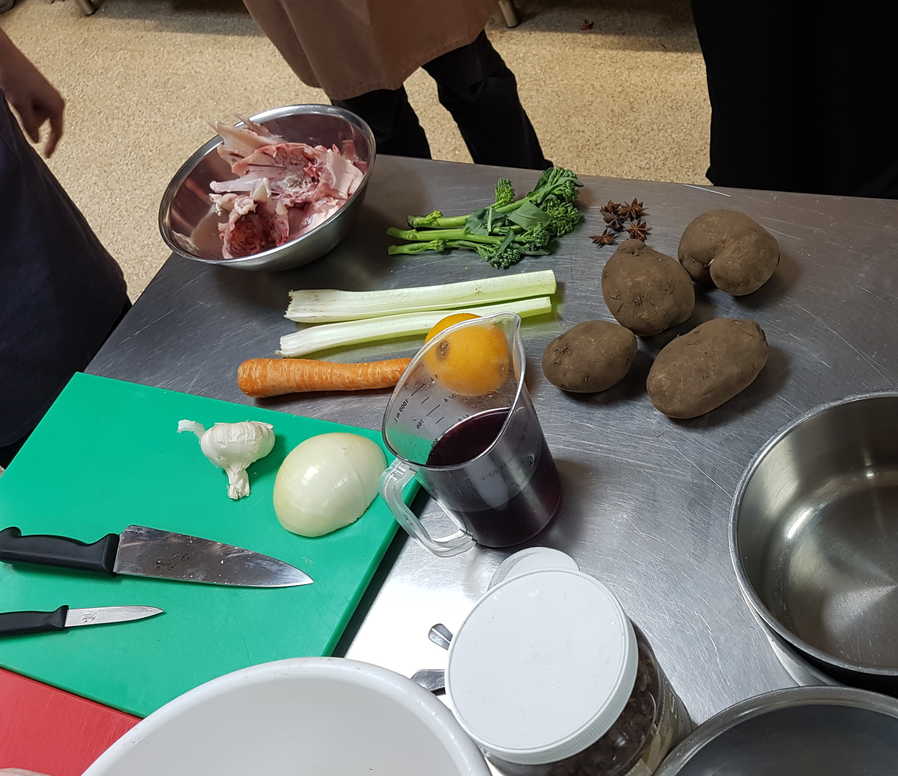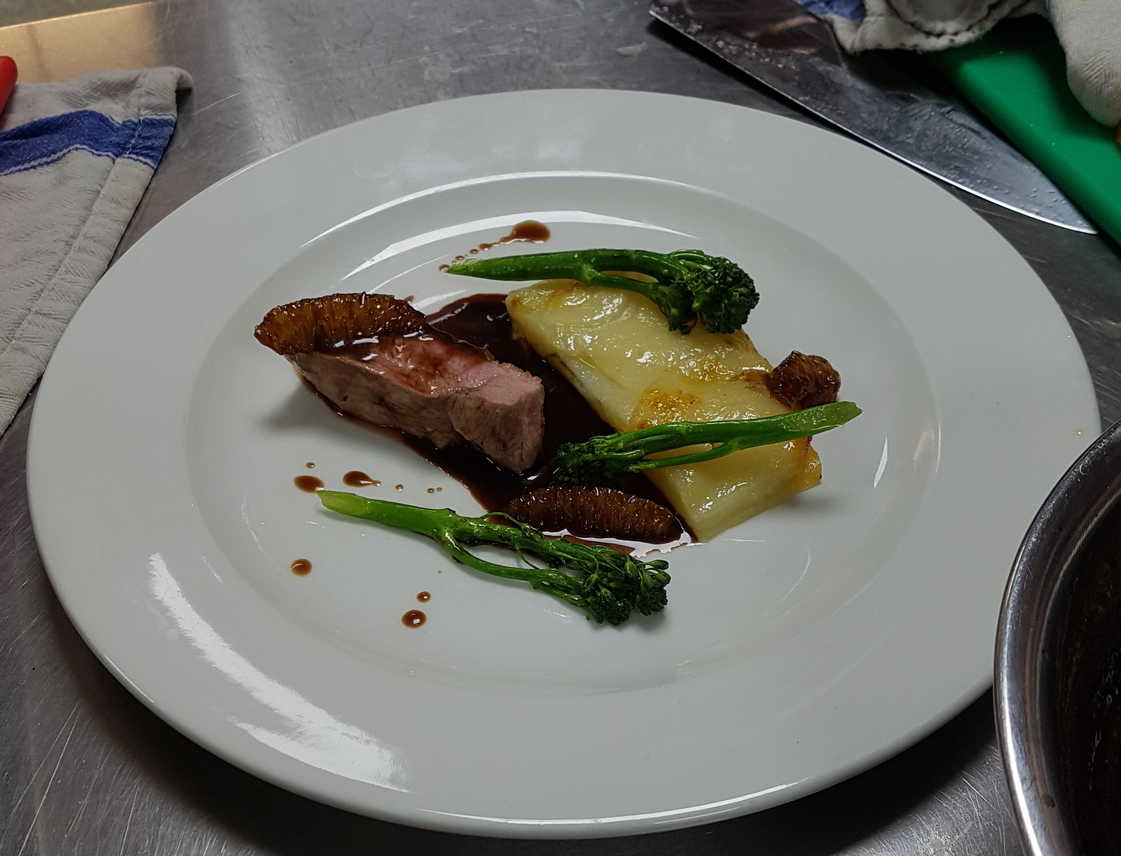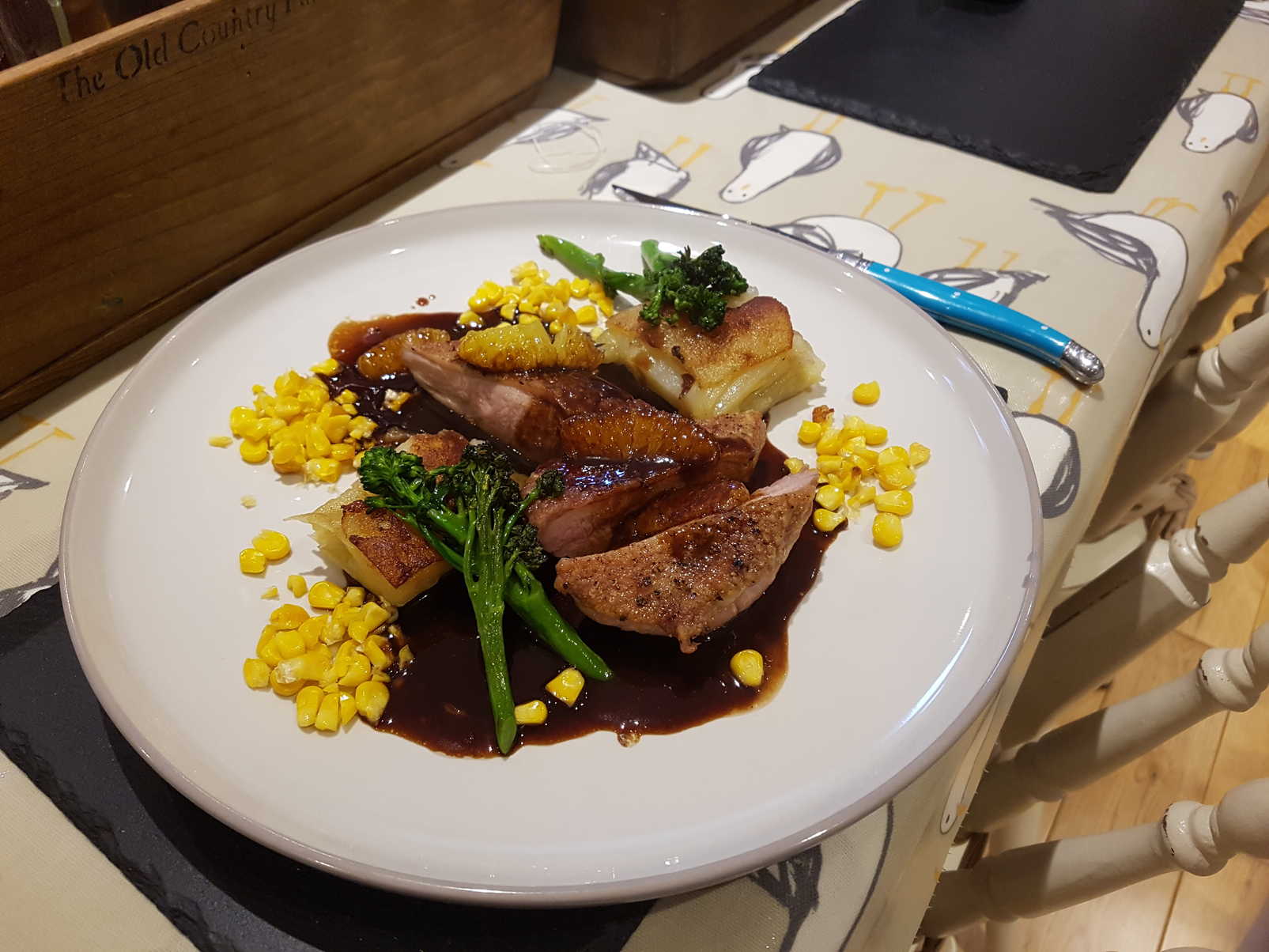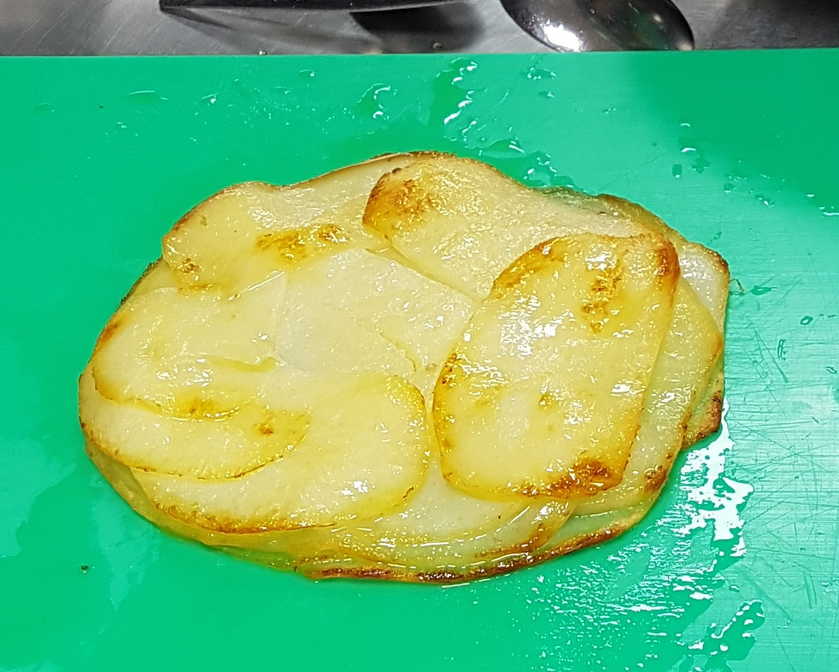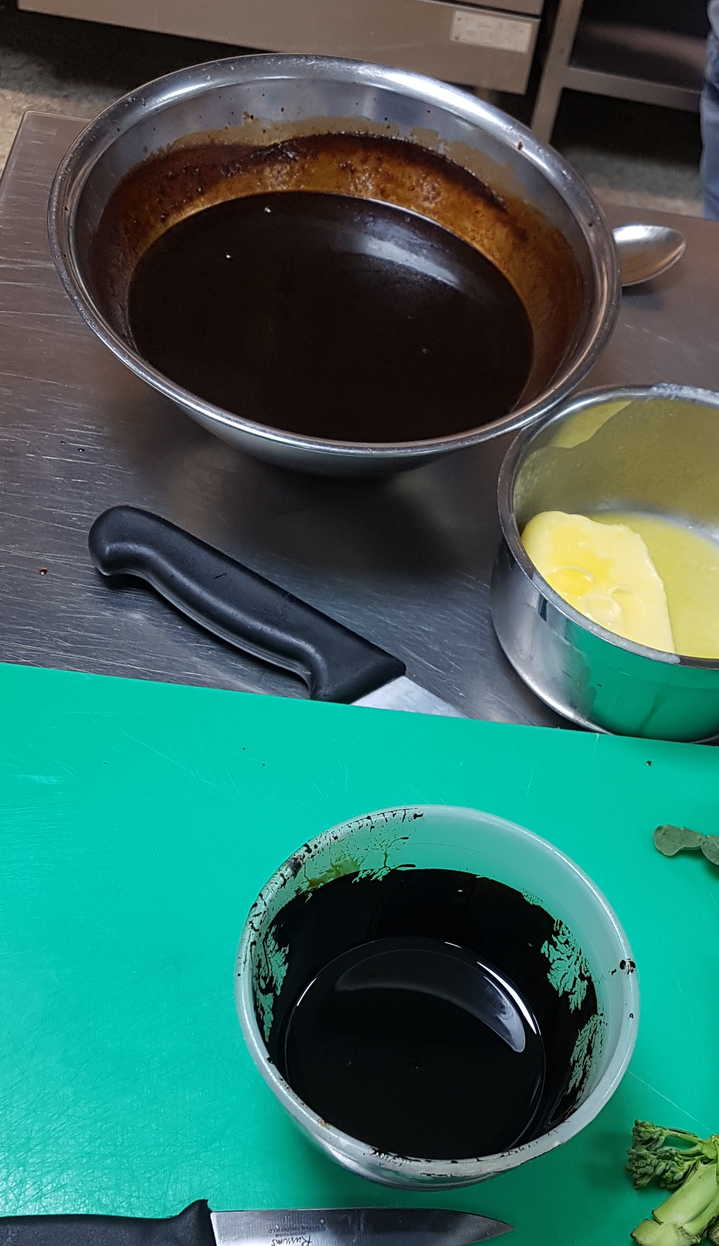
Culinary Masterclass 2 - Duck à l'Orange
The ancient Persians were famed marriers of roasted meats and cooked fruits. And I don't mean in the biblical sense.
Perhaps it is via long North African trade routes by which the fondness for roast duck with oranges spread to 14th Century Tuscany, recorded as paparo all'aranci in the cookbook Il Libro Della Cucina.
Supposedly, in 1533, when Catherine de' Medici married the Duke of Orleans, later to become King Henry II of France, she brought many of her cooks and recipes to France with her, including the then Florentine speciality Papero al Melarancio as it had become known.
The French, ever eager to take credit for ideas not their own, adopted it as Canard à l'Orange, after which it was eventually correctly renamed Duck a l'Orange by the British and then widely popularised in the 1960's as canetons a la bigarad (caneton being duckling, and bigarade the bitter Seville oranges) by American cookery writers and TV chefs like Julia Child.
Perhaps a little too popularly?
Aaron opts for frying just the breasts, rather than roasting the entire duck. A very common modern simplification.
He served his with tenderstem broccoli pan-fried alongside the duck breasts, and a simplified version of the classic French dish Pommes Anna.
Supposedly the Anna of Pommes fame was a courtesan of the wealthy clientele at the famous Paris restaurant Café Anglais during the reign of Napoleon III.
Courtesan is, of course, a high-class French word for prostitute.
Not that there's anything wrong with that!
Perhaps it is via long North African trade routes by which the fondness for roast duck with oranges spread to 14th Century Tuscany, recorded as paparo all'aranci in the cookbook Il Libro Della Cucina.
Supposedly, in 1533, when Catherine de' Medici married the Duke of Orleans, later to become King Henry II of France, she brought many of her cooks and recipes to France with her, including the then Florentine speciality Papero al Melarancio as it had become known.
The French, ever eager to take credit for ideas not their own, adopted it as Canard à l'Orange, after which it was eventually correctly renamed Duck a l'Orange by the British and then widely popularised in the 1960's as canetons a la bigarad (caneton being duckling, and bigarade the bitter Seville oranges) by American cookery writers and TV chefs like Julia Child.
Perhaps a little too popularly?
Aaron opts for frying just the breasts, rather than roasting the entire duck. A very common modern simplification.
He served his with tenderstem broccoli pan-fried alongside the duck breasts, and a simplified version of the classic French dish Pommes Anna.
Supposedly the Anna of Pommes fame was a courtesan of the wealthy clientele at the famous Paris restaurant Café Anglais during the reign of Napoleon III.
Courtesan is, of course, a high-class French word for prostitute.
Not that there's anything wrong with that!
menu
Dig that Duck
Duck à l'Orange
Duck à l'Orange
Orange duck.
Tenderstem Broccoli
Green broccoli. Charred, or just fried alongside the duck.
Pommes Anna
Potato-coloured, er, potatoes.
Duck à l'Orange
main fowl
You know what doesn't go with Duck Breasts à l'Orange? Corn!
But sometimes you just have to eat what you have.
But sometimes you just have to eat what you have.
Serves 2
Ingredients
- 4 pieces of chicken carcass
- 2 sticks celery
- 1 onion
- 1 carrot
- ½ head garlic
- 500ml red wine
- ¼ cup sugar
- 5 star anise
- zest, segments and juice of 1 orange
- duck breast
Optional Accompaniment:- tenderstem broccoli
First Make a Quick Stock Reduction:
Throw the chicken carcass pieces into a dry stock pot and allow them to take on some colour.
Add roughly chopped celery, carrot, onion and garlic.
Stir to colour then add water and orange zest (use a vegetable peeler to remove only the zest from the orange).
Simmer for an hour. Strain. Reduce by half.
Simmer the red wine with the sugar and star anise until it reduces by half.
Combine the reduced wine and stock and reduce again by half or until a reasonably stickyness is reached.
Stir in a few spoonfuls of restaurant sauce enhancer to thicken and intensify the sauce.
Supreme the Orange:
To do this, first cut off the top and bottom of the orange.
Then standing the orange on one end, use a sharp knife to cut away the peel in vertical segments curving the knife around the contour of the orange. Be sure to remove all peel, pith and membrane, but try not to cut away too much flesh.
Use a paring knife to slice along the inner membranes between each of the orange segments to free the fleshy wedges without any attached tissue layer.
Discard the membraneous skeleton left behind.
Save all of the leaked juice.
Cook the Duck:
Remove any flesh-side sinew or silverskin which will otherwise contract on cooking and distort the breast.
Trim the skin and straighten the sides to neaten up the breast (excess skin is most easily cut with the breast skin-side down).
Now throw in a large knob of butter, optionally with a few herbs or garlic, and baste the duck to cook it to completion.
You don't want to over-cook the skin-side, which will dry it out, so if the breast is very thick then put the whole ovenproof! pan into the oven for 10-15 minutes with the breast skin-side up to cook through.
Serve:
Add the orange segments to the sauce at the last minute and brighten the flavour with any spare orange juice.
Slice the breast, dress with the sauce and decorate with a few of the sauce-warmed orange segments.
Serve with charred or butter-sweated tenderstem broccoli and browned pommes Anna slices.
Throw the chicken carcass pieces into a dry stock pot and allow them to take on some colour.
Add roughly chopped celery, carrot, onion and garlic.
Stir to colour then add water and orange zest (use a vegetable peeler to remove only the zest from the orange).
Simmer for an hour. Strain. Reduce by half.
Simmer the red wine with the sugar and star anise until it reduces by half.
Combine the reduced wine and stock and reduce again by half or until a reasonably stickyness is reached.
Stir in a few spoonfuls of restaurant sauce enhancer to thicken and intensify the sauce.
Supreme the Orange:
To do this, first cut off the top and bottom of the orange.
Then standing the orange on one end, use a sharp knife to cut away the peel in vertical segments curving the knife around the contour of the orange. Be sure to remove all peel, pith and membrane, but try not to cut away too much flesh.
Use a paring knife to slice along the inner membranes between each of the orange segments to free the fleshy wedges without any attached tissue layer.
Discard the membraneous skeleton left behind.
Save all of the leaked juice.
Cook the Duck:
Remove any flesh-side sinew or silverskin which will otherwise contract on cooking and distort the breast.
Trim the skin and straighten the sides to neaten up the breast (excess skin is most easily cut with the breast skin-side down).
This might not actually leave much flesh behind if the breast is a cheap one of the kind that might be found in a college kitchen.
Slap the duck breast skin-side down into a cold, dry frying pan. Place on a medium heat and allow the skin to render its fat content away and crisp nicely.
Aaron is not keen on pre-salting duck skin, though almost everyone else is.
He would have salted the flesh side of the breast once it went into the pan if he could have found the salt. However, the sauce and the potatoes will be quite salty enough for this dish, so more seasoning may not be required.
When the breast is cooked over half-way through, flip it over to fry the other side.He would have salted the flesh side of the breast once it went into the pan if he could have found the salt. However, the sauce and the potatoes will be quite salty enough for this dish, so more seasoning may not be required.
Now throw in a large knob of butter, optionally with a few herbs or garlic, and baste the duck to cook it to completion.
Professional chefs love butter basting!
If you're wanting to fry tenderstem broccoli, then add it here and cook it in the butter with duck. Trim the stalks and carefully pluck off all the small leaves first, which will turn an unsightly brown otherwise.
At this stage the flesh will have firmed up slightly - though you should use a meat thermometer to check.If you're wanting to fry tenderstem broccoli, then add it here and cook it in the butter with duck. Trim the stalks and carefully pluck off all the small leaves first, which will turn an unsightly brown otherwise.
You don't want to over-cook the skin-side, which will dry it out, so if the breast is very thick then put the whole ovenproof! pan into the oven for 10-15 minutes with the breast skin-side up to cook through.
Serve:
Add the orange segments to the sauce at the last minute and brighten the flavour with any spare orange juice.
Slice the breast, dress with the sauce and decorate with a few of the sauce-warmed orange segments.
Serve with charred or butter-sweated tenderstem broccoli and browned pommes Anna slices.
Or Corn!
Pommes Anna
veg side staple
Pommes Anna are basically a fancy kind of hash browns, but in the form of a potato layer-cake or galette.
Golden-brown and crunchy on the outside, soft and succulent in the centre.
Classically they are browned in a skillet on the stove top, then cooked through in the oven, and inverted to serve - so that the gorgeously butter-crisped layer is uppermost.
A modern alternative is to brown the top of the cake under the grill to finish.
Professionally it is often made in a special invertable copper dish called a cocotte.
Yes, like the prostitute.
These are quite rare and expensive, apparently, so more often the dish is cooked in a cast iron or non-stick skillet, to reduce sticking.
Wrapping it in baking parchment as Aaron does here makes it much easier to remove the cake for serving. However, you can't easily get the amount of crispy browning which might be expected of a perfect Anna; usually done either on the stove-top before roasting, or under the grill afterwards.
Which might be why Aaron suggested cooking it the day before, then browning the individual portions before serving them.
The potatoes used in a Pommes Anna are most often starchy, like russets or Yukon Gold - to better hold the cake together.
Aaron chose Sagitta.
Classically they are browned in a skillet on the stove top, then cooked through in the oven, and inverted to serve - so that the gorgeously butter-crisped layer is uppermost.
A modern alternative is to brown the top of the cake under the grill to finish.
Professionally it is often made in a special invertable copper dish called a cocotte.
Yes, like the prostitute.
These are quite rare and expensive, apparently, so more often the dish is cooked in a cast iron or non-stick skillet, to reduce sticking.
Wrapping it in baking parchment as Aaron does here makes it much easier to remove the cake for serving. However, you can't easily get the amount of crispy browning which might be expected of a perfect Anna; usually done either on the stove-top before roasting, or under the grill afterwards.
Which might be why Aaron suggested cooking it the day before, then browning the individual portions before serving them.
The potatoes used in a Pommes Anna are most often starchy, like russets or Yukon Gold - to better hold the cake together.
Aaron chose Sagitta.
Serves 4-6
Ingredients
- 3-5 Sagitta potatoes or other dry, starchy/floury, low-sugar potato
- butter, lots of butter. Lots of butter.
Options:- thyme leaves
- pepper
Melt 200g butter in a small pot.
Add a ladleful of butter and some seasoning perhaps a few sprigs of thyme to start.
Peel and thinly slice the potatoes. Arrange the slices prettily into five layers in the paper-lined dish, seasoning and generously drizzling each layer with butter.
Pommes Anna is traditionally made using clarified butter, probably to keep the excess moisture to a minimum so the potatoes roast not boil.
For the same reason you should be sure to dry the potato slices before adding them
Moisten a sheet of greaseproof paper or baking parchment under the tap and then scrunch up.
Use it to line an oven-proof dish.Add a ladleful of butter and some seasoning perhaps a few sprigs of thyme to start.
Peel and thinly slice the potatoes. Arrange the slices prettily into five layers in the paper-lined dish, seasoning and generously drizzling each layer with butter.
Usually the potato slices are layered in spirals - starting at the centre for the first (bottom) layer, then starting at the outside for the next layer,
and alternating thereafter.
The dish needs quite a lot of salt so be generous, unless the butter is already highly salted.
Drizzle butter over the top, fold over the paper and crimp together at the top, pressing down firmly to compress the layer cake.
Cover the dish with tin foil.
The dish needs quite a lot of salt so be generous, unless the butter is already highly salted.
It's quite common to weigh down the foil with baking beans to help the layers hold together.
Bake for 40 minutes at 200°C/400°F/Gas Mark 6 or until easily penetrated with a knife, then remove the foil and cook for a further 5-10 minutes to brown.
It's best cooled overnight in the fridge at this stage, perhaps pressed, before cutting into square or triangular servings:
Brown each serving lightly in a pan then warm through in the oven to plate.
Pour off the excess butter, turn out the paper-wrapped potato cake onto a board, and allow to rest.
Brown each serving lightly in a pan then warm through in the oven to plate.
Well those French whores certainly knew their potatoes 😂
Restaurant Sauce Enhancer
sauce ingredient meat
This is a useful professional trick for producing a sauce base from
highly concentrated restaurant gravy browning and water.
Ultra-Tex is a modern vegan thickening agent made from modified tapioca starch or maize.
It produces a very smooth and creamy, glossy texture in both hot, cold and frozen liquids.
Apparently the ultra-tex powder blends quite easily into hot or cold liquids without lumping, though Aaron had already made up our sauce base ahead of the class.
Now enrich your chosen sauce or stock with a few spoonfuls of this base.
Ultra-Tex is a modern vegan thickening agent made from modified tapioca starch or maize.
It produces a very smooth and creamy, glossy texture in both hot, cold and frozen liquids.
Apparently the ultra-tex powder blends quite easily into hot or cold liquids without lumping, though Aaron had already made up our sauce base ahead of the class.
Now enrich your chosen sauce or stock with a few spoonfuls of this base.
Makes 1 Litre
Ingredients
- 1 litre water
- 1 tablespoon Ultra-Tex
- 1 teaspoon restaurant gravy browning
Mix the gravy browning into the water, then whisk in the ultra-tex.
It's now ready to use.
It's now ready to use.
I must admit this Frankenstein sauce enricher does impart a pleasant mouth feel.
